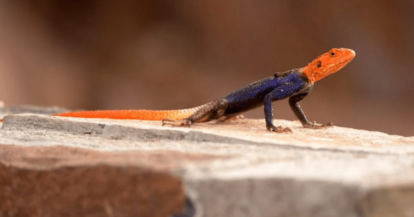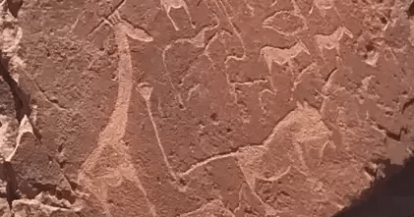The San, or Bushmen as they are commonly known, are believed to be THE indigenous people of Southern Africa. The San lived in harmony with nature and followed the migration of animals from time to time, over thousands of years. Wherever they lived, they left no trace of their presence except for the remarkable stories on their rock shelters. The paintings, drawings, or images engraved on the rocks are commonly known as rock art.
The Bushman rock art is found everywhere in Southern Africa and Namibia is no exception. Some of the well-known rock art sites in Namibia include the Spitzkoppe, Brandberg and Twyfelfontein.
The Twyfelfontein area is renowned for some of the best examples of Bushmen paintings and rock engravings in southern Africa. The paintings are usually found on walls of rock shelters or caves formed in cliffs in mountain of the country. These artworks where created by removing part of the rock surface by abrading, carving, incising or pecking. This area became Namibia’s first UNESCO world heritage listed site back in 2007.
Spitzkoppe is also described as the Matterhorn of Namibia and is situated between Usakos and Swakopmund. Forming part of the Spitzkoppe mountain range is the bushman paradise cave which houses one of the finest collections of rock art in Namibia. This cave has been known to Europeans since the beginning of the 20th century. Unfortunately some of these paintings today are badly damaged due to vandalism. The bushman rock paintings at paradise cave were proclaimed a national monument on 1 July 1954.
At the Brandberg, Namibia’s highest mountain there are more than 1000 known rock shelters that houses in excess of 45,000 individual paintings of animal and human drawings (glyphs). The most popular around Brandberg is the White Lady painting believed to be more than 25,000 years old. The Brandberg became a national monument on 3 October 2002.
The white lady bushman painting of Brandberg as well as the bushman rock art of Twyfelfontein are both managed by the Namibian Heritage Council and an entry fee is payable on your visit. For those interested in rock art, Brandberg and Twyfelfontein are a must.




